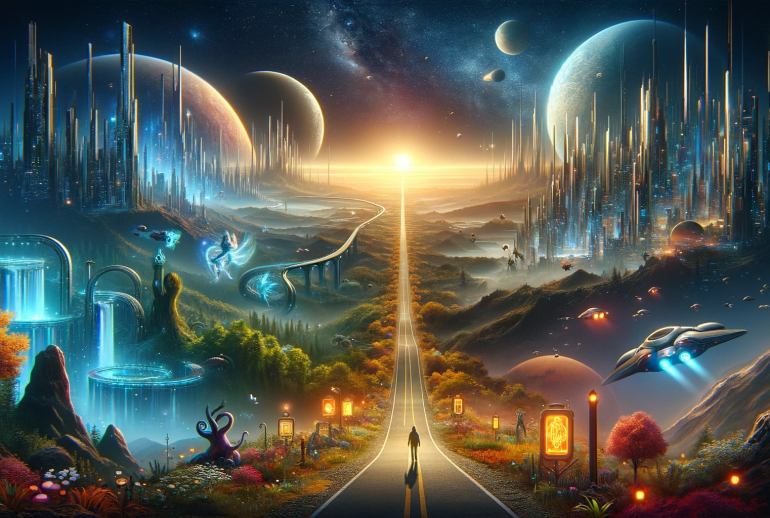World-building is an art that knows no boundaries, and it takes on a special allure when explored within the distinct realms of various literary genres. In the world of fiction, genres like fantasy, science fiction, and historical fiction offer both writers and readers the chance to traverse imaginative landscapes, explore futuristic possibilities, or journey back in time to bygone eras. Yet, within each of these genres, world-building presents its own set of challenges and opportunities that enrich the storytelling experience. In this article, we’ll delve into the captivating domain of genre-specific world-building, delving into the unique attributes and intricacies that shape the fictional universes of fantasy, science fiction, and historical fiction.
Introduction: Crafting Worlds Within Worlds
World-building, as a fundamental aspect of storytelling, serves as the canvas upon which authors paint their narratives. It allows writers to breathe life into the worlds they conceive, immersing readers in settings that range from the familiar to the fantastical. While the core principles of world-building remain constant, each genre introduces its own set of parameters and possibilities, guiding the creative process in distinct ways. Let’s embark on a journey through the genre-specific nuances of world-building, uncovering the secrets to crafting immersive and compelling literary universes.
Fantasy: Forging Realms of Magic and Myth
The Power of Imagination
Fantasy is a genre defined by boundless imagination, where writers have the freedom to create worlds unrestrained by the laws of our own. It’s a realm of magic, myth, and wonder, and world-building is the gateway to unlocking its full potential.
- Magic Systems: Magic is often at the heart of fantasy worlds. Authors must establish rules, limitations, and sources of magic, as well as its impact on society and individuals.
- Mythical Creatures: Populate your world with fantastical beings like dragons, elves, and trolls. Consider their origins, roles, and relationships with other inhabitants.
- Cultural Diversity: Fantasy worlds often feature diverse races and species. Explore their distinct cultures, languages, and interactions.
- Geography: Create unique landscapes, from enchanted forests to mystical realms accessible through portals or hidden gateways.
The Quest for Believability
Despite its fantastical elements, a well-crafted fantasy world must maintain a sense of internal consistency and logic. This ensures that readers can immerse themselves in the story without feeling disconnected.
Science Fiction: Bridging Reality and the Unexplored
The Future and Beyond
Science fiction propels readers into the future and explores the limitless possibilities of technology, space exploration, and the evolution of humanity. World-building in this genre is often grounded in scientific principles while allowing room for speculative leaps.
- Advanced Technology: Define the technological landscape of your world, from advanced AI and space travel to futuristic medicine and robotics.
- Alien Civilizations: If your world features extraterrestrial life, consider their biology, culture, and the impact of first contact with humans.
- Alternate Realities: Science fiction often delves into parallel universes or alternate realities. Create rules for how these realms function and interact.
- Future Societal Structures: Envision the evolution of human society, addressing issues like governance, ethics, and the consequences of scientific advancements.
Realistic Speculation
While science fiction may explore the realms of the improbable, it remains rooted in scientific principles and extrapolates from existing knowledge. Striking a balance between innovation and plausibility is key to crafting a compelling world.
Historical Fiction: Reviving the Past
The Tapestry of History
Historical fiction invites readers to step into the shoes of characters from bygone eras, experiencing the past with vivid authenticity. World-building in this genre requires meticulous research and attention to historical accuracy.
- Time and Place: Transport readers to a specific time and location in history. Research the customs, architecture, clothing, and language of the period.
- Historical Figures: Incorporate real historical figures into your world, weaving their stories into the narrative while respecting their factual biographies.
- Societal Norms: Understand the social norms, hierarchies, and prejudices of the era. Show how these factors shape your characters’ lives and choices.
- Authentic Dialogue: Craft dialogue that reflects the language and idioms of the time while remaining accessible to modern readers.
Balancing Fact and Fiction
Historical fiction requires a delicate balance between staying faithful to historical accuracy and weaving a compelling narrative. The challenge lies in infusing the past with life and relatability while respecting historical truths.
Conclusion: The Tapestry of Genre-Specific Worlds
Genre-specific world-building is a journey of exploration and creativity, where the boundaries of reality are pushed, bent, or preserved to serve the narrative’s purpose. Whether it’s the enchanting realms of fantasy, the speculative wonders of science fiction, or the rich tapestry of historical fiction, each genre offers writers a unique canvas to paint their stories.
Aspiring authors venturing into these genres should approach world-building with a deep appreciation for the genre’s conventions and a willingness to push the boundaries of their own imagination. By embracing the challenges and opportunities of genre-specific world-building, writers can craft immersive and unforgettable literary experiences that captivate readers, transport them to distant realms, and allow them to traverse the intricate landscapes of human imagination. So, whether you’re weaving spells, charting the cosmos, or reliving the past, remember that the art of world-building is your passport to storytelling greatness.



